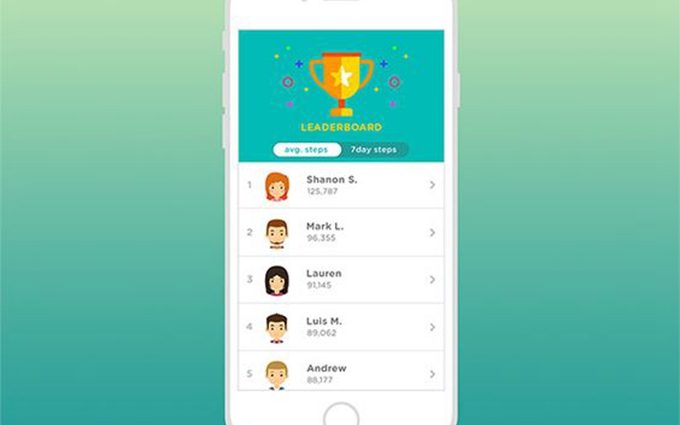As COVID-19 instances proceed to surge, handbook contact tracing—monitoring the unfold of the virus from individual to individual—has been cited as one solution to mitigate the unfold of the virus. To complement handbook contact tracing, public well being authorities (each in america and internationally) have deployed publicity notification apps that may be downloaded by smartphone customers.The apps are supposed to detect when 2 app customers are in shut contact, then ship a notification if 1 of them later assessments constructive for COVID-19. However how broadly are these apps getting used and what challenges do they current? In right now’s WatchBlog submit, we discover our new report on publicity notification expertise and what it means for the long run.
- Table of Contents:
- COVID-19 Exposure Notification Apps
- app promotion through keyword installs
- keyword install services
- buy app ratings
Are publicity notification apps working?
Researchers and state officers say these apps are functioning as supposed, which means they’re notifying individuals about potential publicity to COVID-19. The place it will get sophisticated is proving that these notifications end in individuals staying residence or getting examined, and that these actions then sluggish the unfold of COVID-19.
Early research made assumptions about how individuals would behave—such because the chance that they might use the app, or that they might self-isolate after receiving an publicity notification. There merely was not information on how individuals behave throughout a pandemic. Now, new research are beginning to emerge which might be primarily based on use of the apps following their deployment. A few of the research present promising outcomes, however it’s nonetheless too early to say simply how efficient the apps are
Are sufficient individuals utilizing these apps to make them efficient?
For our not too long ago accomplished assessment, we checked out how 11 states used publicity notification apps—Alabama, Colorado, Connecticut, Louisiana, Minnesota, Nevada, North Carolina, Pennsylvania, Utah, Virginia, and Washington. Officers from these states stated adoption charges ranged from 19% to 49%. However these numbers should not apples-to-apples comparisons.
For instance, some states reported the share of the entire inhabitants whereas others reported an estimated proportion of smartphone house owners. And typically, states are measuring downloads to find out adoption charges, which might not inform them the portion of those that truly use the apps constantly. Some customers are additionally not reporting in the event that they check constructive or taking precautions if uncovered.
Why may adoption differ throughout states?
One cause for variation is that states adopted publicity notification apps at totally different occasions or in no way. We discovered that 26 states deployed apps over a span of 10 months, in a staggered rollout starting in August 2020. Virginia was the primary state to deploy an publicity notification app, in August 2020, and Massachusetts was the newest, in June 2021. Officers from 7 of the states in our assessment that had not deployed an app cited a number of causes for that call, together with restricted mobile phone protection in rural areas, or competing priorities, comparable to vaccine distribution efforts.
Map of publicity notification app deployment by U.S. states and territories, as of June 2021
We additionally discovered app advertising and marketing and promotion efforts diversified throughout the states we interviewed for our report. State officers additionally stated privateness issues have been a typical barrier to adoption, even supposing consumer privateness and safety have been priorities in designing the apps. For example, these apps are designed in order that states have no idea who has downloaded the app, who has been in touch with whom, or who has acquired publicity notifications.
Notifications from apps are additionally nameless, which implies your app received’t inform you from whom you bought COVID-19. Additional, these apps don’t acquire information on a consumer’s location or with whom they’ve been in touch. Additionally, even after testing constructive, it’s good to volunteer to submit that info to allow the nameless notification.
However whereas app builders took privateness into consideration, we’ve proposed a pair totally different choices for policymakers to think about that may enhance adoption. For example, we reported that policymakers may promote uniform privateness and safety requirements for these apps. Or they may incorporate the apps into the nationwide COVID technique, probably paving the way in which for extra coordinated app deployment sooner or later.
Why do publicity notification apps nonetheless matter greater than a yr and half into the pandemic?
With the uncertainty of the COVID-19 pandemic, new variants, and a few vaccinated individuals getting sick, contact tracing nonetheless continues to play an necessary position. There are not any plans to discontinue their use anytime quickly, significantly as vaccinated and unvaccinated individuals intermingle, and with the emergence of extra transmissible illness variants.
Past COVID-19, state and public well being officers instructed us that publicity notification apps may probably play an necessary position in stopping the unfold of different infectious ailments (e.g., measles) or throughout potential future pandemics.
Ultimately, publicity notification apps operate as supposed. What’s much less clear is whether or not or not they’re efficient in slowing the unfold of COVID-19.


Comments are closed, but trackbacks and pingbacks are open.